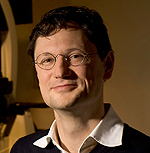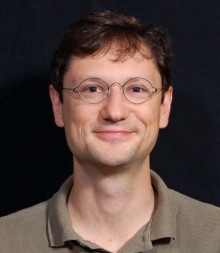The end of iPS? Stanford scientists directly convert mouse skin cells to neural precursors
The end of iPS? Stanford scientists directly convert mouse skin cells to neural precursors
I was excited last week to learn about the recent work of stem cell scientist Marius Wernig, MD, published today (direct link to come) in the Proceedings of the National Academy of Sciences. Wernig directly converted mouse skin cells to neural precursor cells – an extension of previous work in which he created functional neurons from the same types of cells. Although functional neurons might sound more exciting, neural precursor cells promise to be research workhorses.

Marius Wernig, MD.
That’s because these cells can become any of three main components of the nervous system: neurons, oligodendrocytes and astrocytes. They can also be grown to large numbers in the laboratory – a critical factor when carrying out drug screening or considering future transplantation into animals or perhaps even one day even into humans. As Wernig explained in our release:
We are thrilled about the prospects for potential medical use of these cells. We’ve shown the cells can integrate into a mouse brain and produce a missing protein important for the conduction of electrical signal by the neurons. This is important because the mouse model we used mimics that of a human genetic brain disease. However, more work needs to be done to generate similar cells from human skin cells and assess their safety and efficacy.
The release also advances what, for some researchers, may be an even more intriguing idea:
The multiple successes of the direct conversion method could refute the idea that pluripotency (a term that describes the ability of stem cells to become nearly any cell in the body) is necessary for a cell to transform from one cell type to another. Together, the results raise the possibility that embryonic stem cell research and another technique called “induced pluripotency” could be supplanted by a more direct way of generating specific types of cells for therapy or research.
As always, however, more research is needed to determine how cell types generated by the various techniques differ or resemble one another at a molecular level. Right now, there’s no clear winner and it appears there are still several horses in the race.
By Krista Conger
Stanford University Medical Center
###

Marius Wernig, MD.
Assistant Professor, Pathology – Stem Cell Institute
Member, Bio-X
> Administrative Appointments
Assistant Professor, Institute for Stem Cell Biology and Regenerative Medicine (2008 – present)
> Honors and Awards
Ascina Award, Republic of Austria (2010)
New Scholar in Aging, Ellison Medical Foundation (2010)
Robertson Investigator Award, New York Stem Cell Foundation (2010)
Donald E. and Delia B. Baxter Faculty Scholarship, Stanford University (2009)
Cozzarelli Prize for outstanding scientific excellence, National Academy of Sciences USA (2009)
Longterm fellowship Human Frontiers Science Program Organisation, HFSP (2004-2006)
Margaret and Herman Sokol Award, Biomedical Research (2007)
###
* Stanford University Medical Center integrates research, medical education and patient care at its three institutions – Stanford University School of Medicine, Stanford Hospital & Clinics and Lucile Packard Children’s Hospital.
** The above story is adapted from materials provided by Stanford University School of Medicine
________________________________________________________________




















